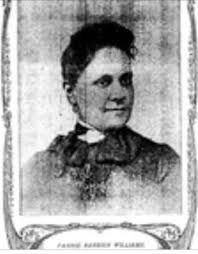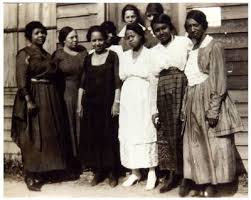Fannie Hopkins Hamilton facts for kids
Fannie Hopkins Hamilton (1882 – 1964) was an amazing dressmaker and a strong supporter of women's right to vote, known as a suffragist. She joined the Equal Suffrage Study Club and worked hard to help the Black community in Wilmington, Delaware. Fannie was a true leader, always contributing, taking action, and teaching others throughout her life.
Contents
Early Life and Education
Fannie Hopkins Hamilton was born in 1882 in Queen Anne's County, Maryland. When she was eight years old, she moved to Wilmington, Delaware, with her widowed mother. Her father, Rev. Oliver Hopkins, was a minister in the African Methodist Episcopal Church. Her stepfather, Benjamin Briggs, was also a minister.
Fannie went to public schools in Wilmington. As an adult and a mother, she decided to become a seamstress and dressmaker. She even traveled to Philadelphia to get special training at Drexel University. Soon, she opened her own shop! She also started teaching sewing classes at schools for Black children in Wilmington. There, she met Alice Moore Dunbar, a famous African-American writer and activist from the Harlem Renaissance period. This connection helped Fannie get involved with the Organization of Business and Professional Women in Wilmington.
Working for Women's Rights
Fannie Hopkins Hamilton played a big part in the fight for women's right to vote. In 1914, she bravely volunteered to be the treasurer of the Equal Suffrage Study Club in Wilmington, Delaware. She was very important in organizing Wilmington's first large parade to support women's voting rights.
Fannie is an important but sometimes forgotten figure among African-American suffragists. Her work shows how women encouraged others to get involved in politics, even after they won the right to vote. The 19th Amendment gave women the right to vote, but many people don't know how much work went into helping women actually use that right. Fannie's efforts in Wilmington show how many women dedicated their time to improving their communities.
Helping the African-American Community
After the 19th Amendment was passed, the Equal Suffrage Study Club changed its name to the Colored Women’s Republican Committee. As a member, Fannie worked hard to encourage people to register and vote.
She also spent a lot of time helping the Red Circle Community Association. This group raised money to make playgrounds better for African-American children. Fannie also helped manage fun activities and gave advice on how to manage money at the "Walnut Street Y." This was a special branch of the YMCA for African-Americans.
Fannie's brother, John O. Hopkins, was also a community leader. He served on Wilmington’s City Council and often spoke out against unfair racial segregation policies. He even started a theater for the Black community, where Fannie helped organize events.
Personal Life and Legacy
Fannie was married to George W. Hamilton for 62 years. They had two daughters, Katherine Lorraine Hamilton and Elizabeth Anderson Parker. She also had a granddaughter and three great-grandchildren.
Fannie continued her work as a dressmaker, businesswoman, suffragist, and civil rights activist for many years. She passed away in 1964 at the age of 81.
Fannie's legacy lives on through the Organization of Business and Professional Women in Wilmington, which she helped create. Her teaching of dressmaking at Wilmington schools also had a lasting impact. Fannie often volunteered her time to help families plan their clothing budgets during wartime. She also worked to find foster homes and create fun programs for Black children, and she helped raise money for the Red Cross. Many people in the community relied on Fannie's business and money skills.



